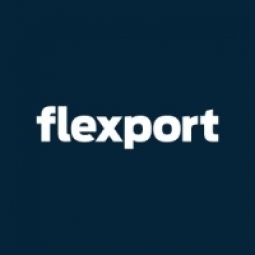Technology Category
- Functional Applications - Inventory Management Systems
- Platform as a Service (PaaS) - Application Development Platforms
Applicable Industries
- Electronics
- Retail
Applicable Functions
- Logistics & Transportation
- Procurement
Use Cases
- Inventory Management
- Supply Chain Visibility
About The Customer
Blokker is one of the oldest and most recognized retail brands in The Netherlands, founded in 1896. The company operates more than 350 stores and 70 franchises, offering a range of household goods from electronics to kitchen appliances. In recent years, Blokker has faced increased competition from other retailers, both online and physical, leading to a period of falling profits. To better position itself for long-term profitability, Blokker needed to increase its margins and identified its supply chain and sourcing strategy as key areas for improvement.
The Challenge
Blokker, a popular retail brand in The Netherlands, was facing a period of falling profits due to increased competition from both online and physical retailers. This created a challenging market condition for the company, which needed to increase its margins to ensure long-term profitability. The company's supply chain and sourcing strategy were identified as key areas for improvement. Blokker expanded its supplier base to 200 suppliers, increased the order frequency, and drove cargo consolidation in the Far East. However, these changes put additional strain on the supply chain, creating issues that needed to be addressed.
The Solution
Blokker partnered with Flexport to improve its Far East logistics and cut costs across the line. Flexport provided a platform where all shipment communication, data, and documents could be centralized, streamlining communications and reducing the burden of managing hundreds of emails a day. Major purchase order and shipment milestones were automatically pushed to Blokker's internal systems through electronic data interchange (EDI), enabling the company to take direct action in day-to-day workflows. Flexport's integrated platform provided full transparency into the logistics flow from origin to local warehouses, not only for standard container loads but also for more complex logistical operations. This allowed Blokker to execute sophisticated consol boxes for up to 10 suppliers, increasing order frequency and decreasing working capital position.
Operational Impact
Quantitative Benefit

Case Study missing?
Start adding your own!
Register with your work email and create a new case study profile for your business.
Related Case Studies.

Case Study
Remote Temperature Monitoring of Perishable Goods Saves Money
RMONI was facing temperature monitoring challenges in a cold chain business. A cold chain must be established and maintained to ensure goods have been properly refrigerated during every step of the process, making temperature monitoring a critical business function. Manual registration practice can be very costly, labor intensive and prone to mistakes.

Case Study
Improving Production Line Efficiency with Ethernet Micro RTU Controller
Moxa was asked to provide a connectivity solution for one of the world's leading cosmetics companies. This multinational corporation, with retail presence in 130 countries, 23 global braches, and over 66,000 employees, sought to improve the efficiency of their production process by migrating from manual monitoring to an automatic productivity monitoring system. The production line was being monitored by ABB Real-TPI, a factory information system that offers data collection and analysis to improve plant efficiency. Due to software limitations, the customer needed an OPC server and a corresponding I/O solution to collect data from additional sensor devices for the Real-TPI system. The goal is to enable the factory information system to more thoroughly collect data from every corner of the production line. This will improve its ability to measure Overall Equipment Effectiveness (OEE) and translate into increased production efficiencies. System Requirements • Instant status updates while still consuming minimal bandwidth to relieve strain on limited factory networks • Interoperable with ABB Real-TPI • Small form factor appropriate for deployment where space is scarce • Remote software management and configuration to simplify operations

Case Study
Digital Retail Security Solutions
Sennco wanted to help its retail customers increase sales and profits by developing an innovative alarm system as opposed to conventional connected alarms that are permanently tethered to display products. These traditional security systems were cumbersome and intrusive to the customer shopping experience. Additionally, they provided no useful data or analytics.

Case Study
How Sirqul’s IoT Platform is Crafting Carrefour’s New In-Store Experiences
Carrefour Taiwan’s goal is to be completely digital by end of 2018. Out-dated manual methods for analysis and assumptions limited Carrefour’s ability to change the customer experience and were void of real-time decision-making capabilities. Rather than relying solely on sales data, assumptions, and disparate systems, Carrefour Taiwan’s CEO led an initiative to find a connected IoT solution that could give the team the ability to make real-time changes and more informed decisions. Prior to implementing, Carrefour struggled to address their conversion rates and did not have the proper insights into the customer decision-making process nor how to make an immediate impact without losing customer confidence.









